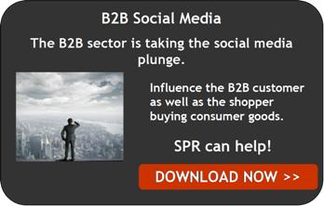It seems like an age-old argument to decide what is the most efficient platform to reach customers: email or social media? Each has received praise and criticism and each has its pros and cons. Like most communications tools, however, neither is unanimous. A recent study by Silverpop, an IBM company that provides email marketing solutions, preaches a middle ground. The solution? Putting the two together.
“Today, social media is about creating conversations with customers and prospects for greater brand affinity and awareness. Email picks up on that and drives the conversion when marketers can integrate them successfully,” explain the authors of the study. They go on to point that a cross-channel strategy that engages the customers is the most effective.
Here are 10 tips to integrate the two platforms:
- Add an email opt-in form to your Facebook page. If they like your content, they may become fans. Email is a way for them to make sure they keep seeing your material straight in their inbox.
- Use your Facebook or Twitter newsfeeds to promote opt-ins. Using social media posts as teasers to link back to a blog or a website is a common and successful tactic. “On both Twitter and Facebook, newsletter articles often make great posts, as do your regular deals and ‘email only’ exclusives that let your non-subscriber fans know what they’re missing.” Just be sure to adapt the content to the platform requirements.
- Promote your social campaigns on your emails. If a recipient of your newsletter stumbled across your content from other platforms, driving them to your social media profiles may be a good idea for them to stay up-to-date with your brand.
- Repost popular social content in email. “Use the broad reach of your email program to give your own social content more exposure.” Periodic messages with the best of the week or the month are always interesting. It may also help spot a trend among your best performing material.
- Put your social icons where people will see them.
- Promote your social connections in your email onboarding series. As a welcome packet for new subscribers, have a group of emails go out with information about your company. One of these messages should be about your social media channels and why they’re worth following.
- Spotlight videos and blog content in email and social posts.
- Create crazy/fun emails that people will want to share via social. “Connecting directly with your customers and fans through social media shows you what content engages them. Capitalize on that information by creating fun emails your readers would likely share as forwards or on their own social channels.”
- Reach out via Facebook Custom Audiences and Twitter’s Lead Generation or Website Cards. The platform’s tools for advertisers are a good way to generate awareness and build an audience. It also helps to target the perfect demographic.
- Invite email unsubscribers to follow you on social media. Sometimes users don’t want to emails, but still want information about your brand. Suggesting they follow you on other channels may be a good solution. HubSpot, a marketing software company, has a hilarious video for unsubscribers.
As healthcare PR professionals, our job is to make the connection between companies and their audiences in a mostly B2B environment that is strictly regulated. Having fun content is always a good idea, but understanding what your audience wants is the best approach to a successful campaign.
When targeting business executives who often make the buying decision, for example, companies must generate content that helps them recognize possible deficiencies and offer a solution to the problem. This approach gives a clear advantage and an opportunity to stand out from the competition.
If you’re in healthcare, insurance, technology or other professional services industries, and need help with a PR, marketing or social media campaign, contact Scott Public Relations.
Like what you’ve read? Follow Scott Public Relations on Facebook, Twitter, Pinterest, LinkedIn and Google+.
Sign up to receive our monthly advice on healthcare, insurance and technology PR: Scott Public Relations






Leave A Comment